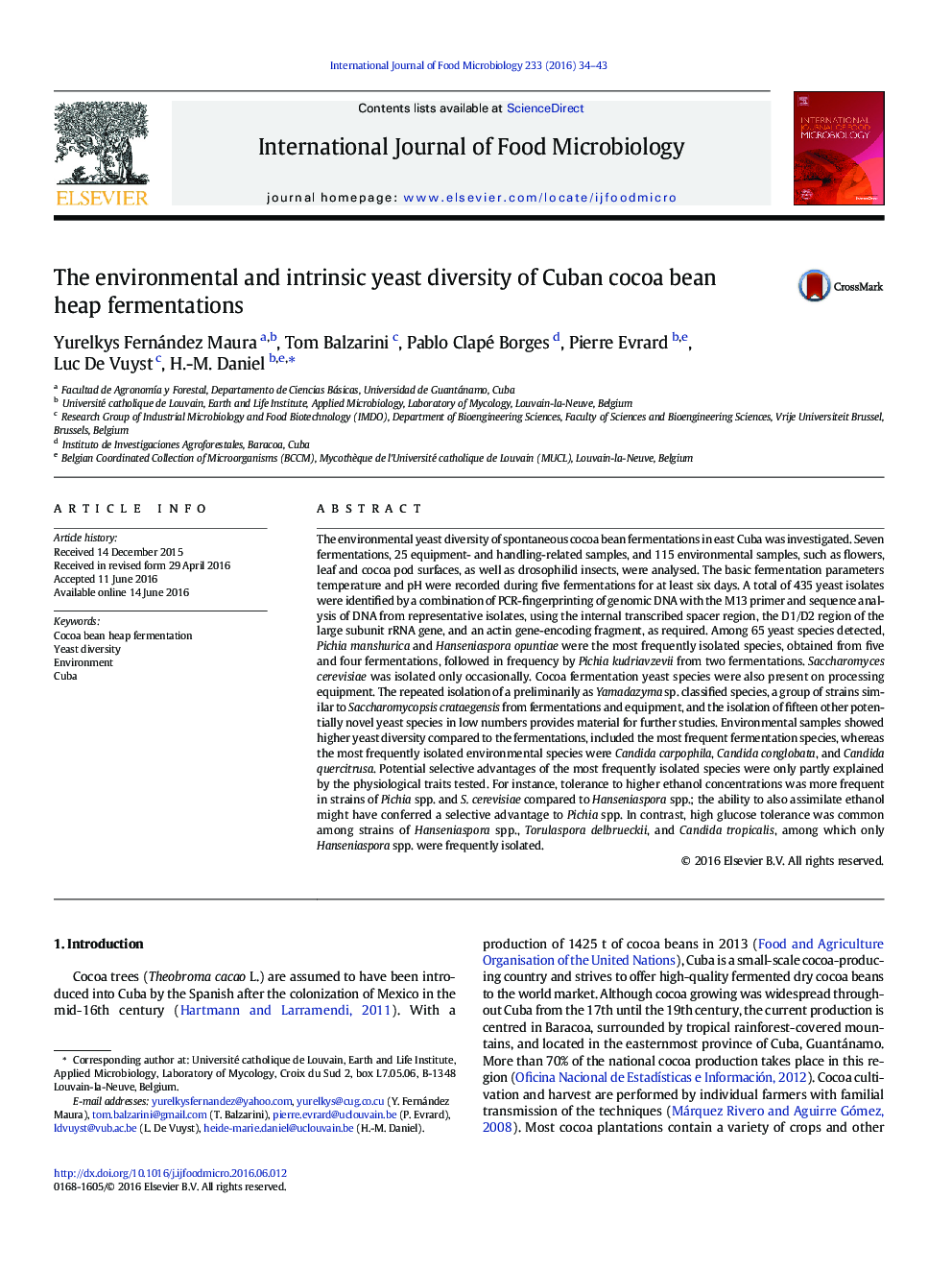| Article ID | Journal | Published Year | Pages | File Type |
|---|---|---|---|---|
| 4366179 | International Journal of Food Microbiology | 2016 | 10 Pages |
•Cuban cocoa fermentation yeasts resembled those in other cocoa-producing countries.•The dominating yeast species were Pichia manshurica and Hanseniaspora opuntiae.•Cocoa fermentation yeast species were present on processing equipment.•Environmental yeast diversity included the major fermentation species.•Discovery of up to 17 potentially novel yeast species destined for further studies.
The environmental yeast diversity of spontaneous cocoa bean fermentations in east Cuba was investigated. Seven fermentations, 25 equipment- and handling-related samples, and 115 environmental samples, such as flowers, leaf and cocoa pod surfaces, as well as drosophilid insects, were analysed. The basic fermentation parameters temperature and pH were recorded during five fermentations for at least six days. A total of 435 yeast isolates were identified by a combination of PCR-fingerprinting of genomic DNA with the M13 primer and sequence analysis of DNA from representative isolates, using the internal transcribed spacer region, the D1/D2 region of the large subunit rRNA gene, and an actin gene-encoding fragment, as required. Among 65 yeast species detected, Pichia manshurica and Hanseniaspora opuntiae were the most frequently isolated species, obtained from five and four fermentations, followed in frequency by Pichia kudriavzevii from two fermentations. Saccharomyces cerevisiae was isolated only occasionally. Cocoa fermentation yeast species were also present on processing equipment. The repeated isolation of a preliminarily as Yamadazyma sp. classified species, a group of strains similar to Saccharomycopsis crataegensis from fermentations and equipment, and the isolation of fifteen other potentially novel yeast species in low numbers provides material for further studies. Environmental samples showed higher yeast diversity compared to the fermentations, included the most frequent fermentation species, whereas the most frequently isolated environmental species were Candida carpophila, Candida conglobata, and Candida quercitrusa. Potential selective advantages of the most frequently isolated species were only partly explained by the physiological traits tested. For instance, tolerance to higher ethanol concentrations was more frequent in strains of Pichia spp. and S. cerevisiae compared to Hanseniaspora spp.; the ability to also assimilate ethanol might have conferred a selective advantage to Pichia spp. In contrast, high glucose tolerance was common among strains of Hanseniaspora spp., Torulaspora delbrueckii, and Candida tropicalis, among which only Hanseniaspora spp. were frequently isolated.
